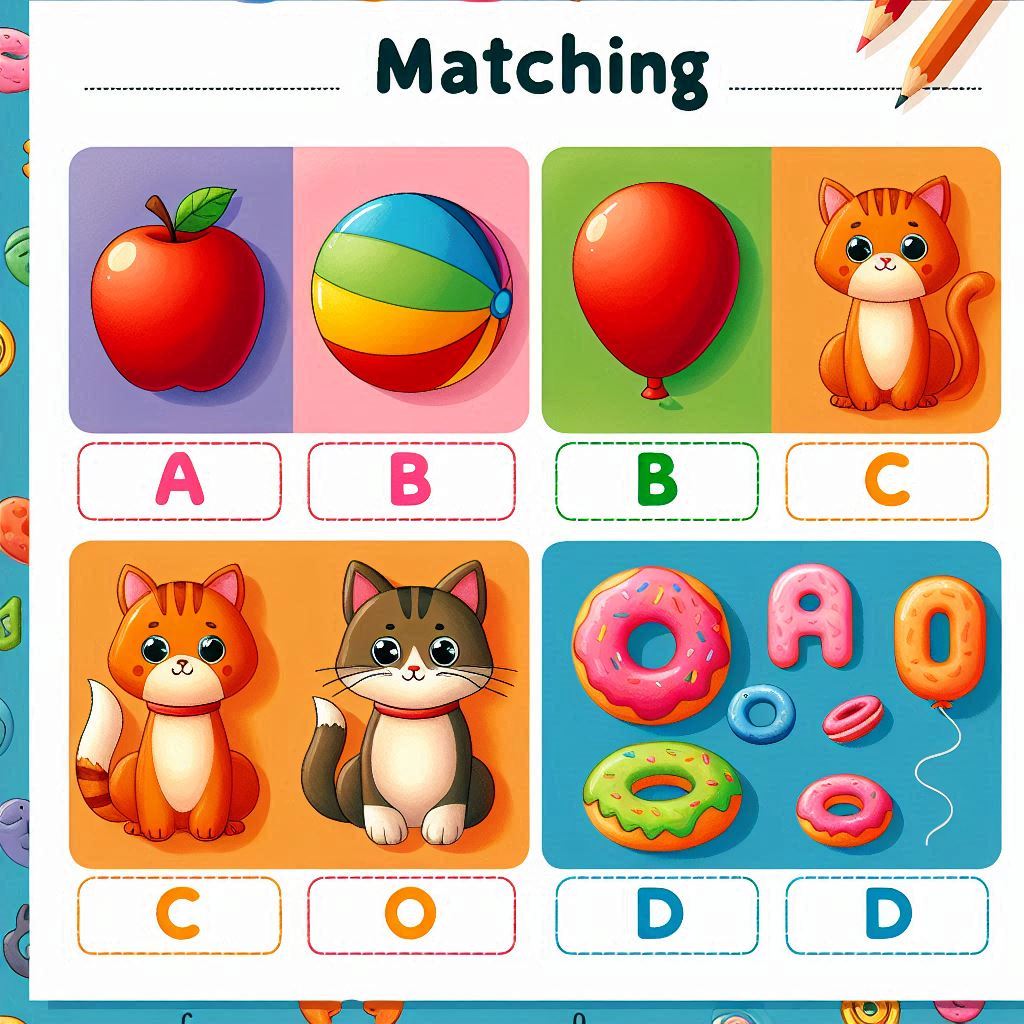Matching Worksheet
















A matching worksheet is an engaging educational tool used to enhance the learning experience by connecting items in one list with those in another. This type of activity promotes critical thinking, memory, and concentration while providing an interactive way to learn different concepts. Whether you’re a student, a teacher, or a parent, matching worksheets are a versatile tool that can be used across various subjects, including language arts, science, history, and even math.

The primary objective of a matching worksheet is to help students recognize relationships, similarities, or connections between different elements. In most cases, a set of items is presented in two columns. One column contains questions, definitions, or images, and the other contains corresponding answers, explanations, or matching images. The task is to draw lines between items in the first column and the correct items in the second column. This simple yet effective exercise stimulates visual learning and improves students' recall abilities.
Matching worksheets are not just restricted to simple matching of words or images. They can be tailored to suit the learning objectives of different subjects. For example, in a language arts class, students can match words with their definitions or synonyms. In a science class, they could match animals with their characteristics, or in a history lesson, they might match historical events with the correct dates or figures. This customization makes matching worksheets ideal for reinforcing concepts in a creative and enjoyable way.
For instance, in language learning, you can use matching worksheets to help students connect foreign vocabulary words with their English equivalents. This method is also effective for students learning new scientific terms or historical facts. By using images alongside words or definitions, students can make stronger associations and retain information for longer periods.
There are several different types of matching activities that educators can use to keep the learning process engaging. Below are a few common types:
Matching worksheets offer numerous benefits for both teachers and students. Some of the key advantages include:

Creating an effective matching worksheet is simple and requires only a few essential steps. First, decide on the subject and topic of the worksheet. This will guide the selection of the words, images, or items that will go into each column. For instance, in a math class, the worksheet might include a set of problems in one column and the corresponding solutions in the other. Alternatively, in a geography class, you could list countries in one column and their capitals in another.
Next, make sure the items in both columns are meaningful and relevant. Avoid adding any unnecessary or unrelated information, as this can confuse students. Also, try to keep the difficulty level of the matching activity appropriate for the age group or grade level of the students. For younger students, start with simple matching tasks like matching animals to their sounds. As students grow older, you can introduce more complex tasks such as matching historical events to their causes or outcomes.
Once the content is decided, lay it out clearly and legibly on the worksheet. Ensure that the items in both columns are easily distinguishable from one another, whether through the use of lines, boxes, or visual separation. Lastly, consider including instructions or a brief explanation of how to complete the activity, especially for younger or less experienced students. Providing hints or examples can make the worksheet more accessible to everyone.
Matching worksheets are a valuable tool for promoting interactive learning in a variety of educational contexts. By helping students make connections between related pieces of information, these worksheets support memory retention, critical thinking, and engagement with the learning process. Whether used in the classroom or at home, matching worksheets offer a fun and effective way for students to learn and reinforce important concepts. With endless possibilities for customization, these worksheets can be adapted to suit any subject, making them a go-to educational resource for learners of all ages. Teachers and students alike will find them to be an indispensable resource for fostering deeper understanding and promoting active learning in any subject.